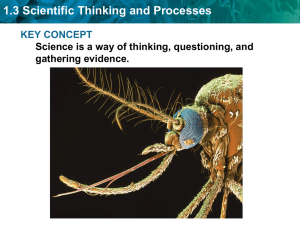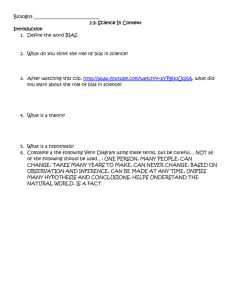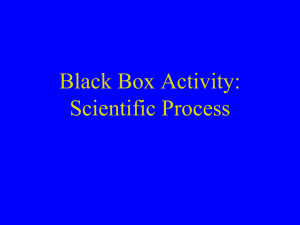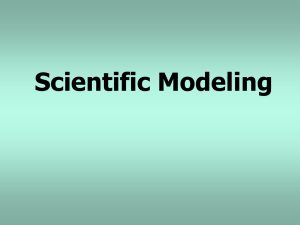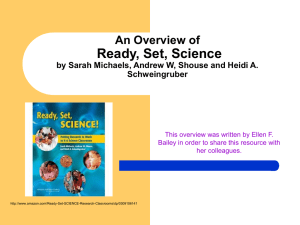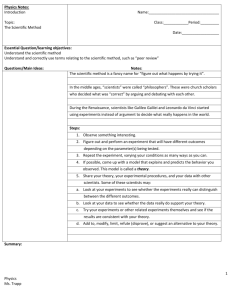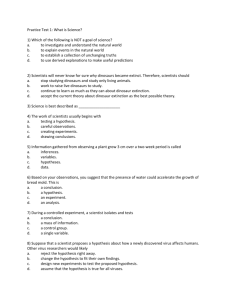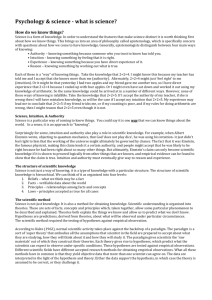Chapter 1 Biology Study Guide - High School
advertisement
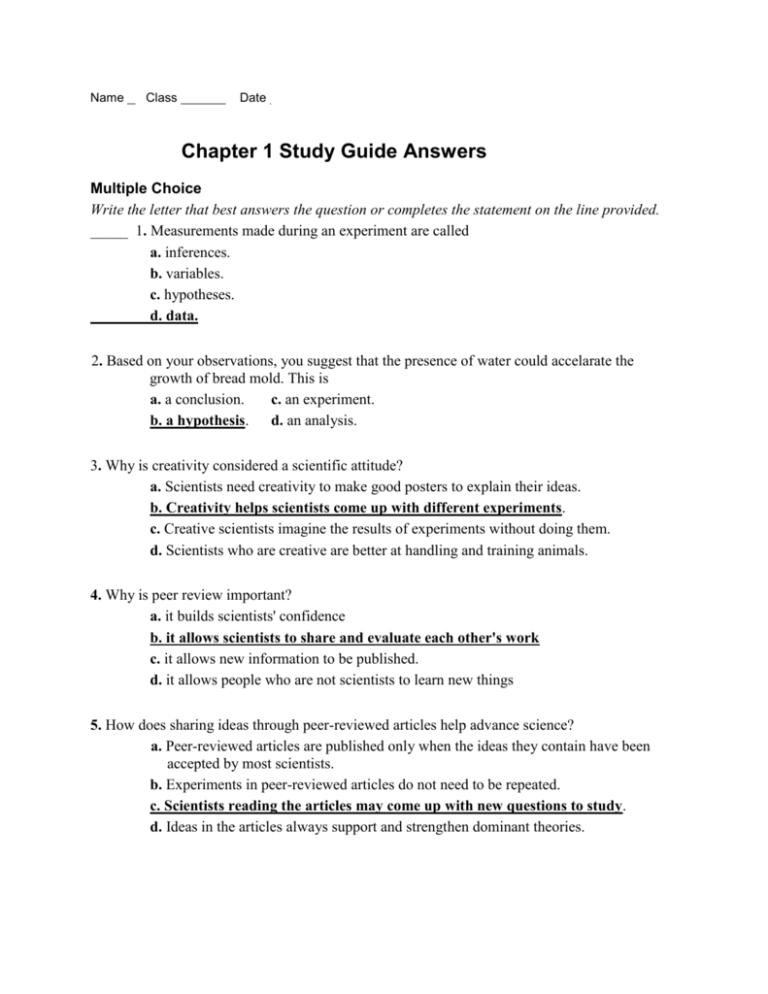
Name Class Date Chapter 1 Study Guide Answers Multiple Choice Write the letter that best answers the question or completes the statement on the line provided. _____ 1. Measurements made during an experiment are called a. inferences. b. variables. c. hypotheses. d. data. 2. Based on your observations, you suggest that the presence of water could accelarate the growth of bread mold. This is a. a conclusion. c. an experiment. b. a hypothesis. d. an analysis. 3. Why is creativity considered a scientific attitude? a. Scientists need creativity to make good posters to explain their ideas. b. Creativity helps scientists come up with different experiments. c. Creative scientists imagine the results of experiments without doing them. d. Scientists who are creative are better at handling and training animals. 4. Why is peer review important? a. it builds scientists' confidence b. it allows scientists to share and evaluate each other's work c. it allows new information to be published. d. it allows people who are not scientists to learn new things 5. How does sharing ideas through peer-reviewed articles help advance science? a. Peer-reviewed articles are published only when the ideas they contain have been accepted by most scientists. b. Experiments in peer-reviewed articles do not need to be repeated. c. Scientists reading the articles may come up with new questions to study. d. Ideas in the articles always support and strengthen dominant theories. 6. Suppose that a scientific idea is well-tested and can be used to make predictions in numerous new situations, but cannot explain one particular event. This idea is a a. hypothesis that is incorrect. b. hypothesis that must be retested. c. theory that should be discarded. d. theory that may need revision. 7. How do scientific theories compare to hypotheses? a. Theories are the same as hypotheses. b. Theories unify a broad range of observations and hypotheses. c. Hypotheses combine the ideas of several theories to explain events. d. Hypotheses are the dominant view among scientists. 8. Cells in multicellular organisms have many different sizes and shapes. These differences in cells are part of cell specialization. Cell specialization allows cells to a. reproduce. c. respond to their environment. b. perform different functions. d. be less complex. 9. Which big idea in biology is MOST concerned with DNA? a. information and heredity c. matter and energy b. cellular basis of life d. interdependence in nature 10. What are the smallest objects considered alive? a. cells b. body organs c. molecules d. organisms 11. The basic unit of length in the metric system is the a. gram. b. liter. c. yard. d. meter. 12. During a controlled experiment, how many variable change? a. 1 c. 2 b. 3 d. 4 13. The name of the one variable that is changed during the experiment is the what? a. independent variable c. controlled variable b. dependent variable d. mastered variable 14. A well-tested explanation that explains a lot of observations is a. a hypothesis. c. a theory. b. an inference. d. a controlled experiment. 15. A personal preference or point of view is a. a bias. c. a hypothesis. b. a theory. d. an inference. 16. Which of the following is NOT a characteristic of all living things? a. growth and development. c. response to the environment. b. ability to move. d. ability to reproduce. 17. The process by which organisms keep a stable internal environment is… a. homeostasis. c. metabolism. b. evolution. d. photosynthesis. 18. On the Galapagos Island, birds’ beaks changed over time. This example represents which big idea in biology? a. respond to the environment b. growth, development, and reproduction c. homeostasis d. evolution 19. Biologists who work in the fields of genomics and molecular biology study a. the biosphere. c. DNA. b. diseases. d. trees. 20. The variable that changes in response to the independent variable is the what? a. control variable c. changed variable b. dependent variable d. managed variable Completion Complete each statement on the line provided. 21. An experiment in which only one variable is changed is a 22. An article that are peer reviewed controlled experiment. are read carefully and checked by other scientists. 23. The goal of science is to explain the natural world and understand patterns about natural events. 24. Facts are observable, repeatable, and testable . 25. A person who asks a lot of questions is curious . Short Answer In complete sentences, write the answers to the questions on the lines provided. 26. What is a bias? Personal view instead of a scientific one. 27. Why is no single characteristic of life enough to describe living things? Many nonliving things share one or more characteristics of life. 28 . Can a theory change over time? Explain your answer. Yes. New technology and information can lead to new evidence that requires a theory to change. 29. List the 5 steps of the scientific method in order and describe each. Observe – what you see Hypothesis – guess for an explanation for observation Experiment – testing hypothesis Data- results from experiment Conclusion – confirmation or denial of hypothesis based on data 30. Describe the two types of data and give an example of each. Quantitative – any data with numbers Qualitative – data based on characteristics.


